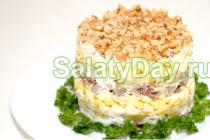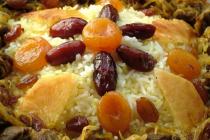When planning a trip to Belarus, it will be useful to get acquainted with the peculiarities of the country's payment system. But this article contains valuable information on this topic not only for the guests of the Republic, but also for its inhabitants.
A bit of history
The Belarusian ruble is a relatively young national currency in Belarus. The monetary unit began its history of formation in the first half of the 90s, when the Soviet Union collapsed, Belarus became isolated, and the country needed its own money. Since 1992, coupons have been in circulation, but payment transactions by bank transfer were already carried out in Belarusian rubles. In 1993, there were settlement tickets, and starting from the end of July of that year, Soviet rubles began to be withdrawn from money circulation.
Since 1994, the Belarusian ruble has rightfully acquired the status of the country's only currency.
Belarusian banknotes of 1992 sample

Belarusian banknotes of 1994-1999 sample

Belarusian banknotes of 2000 sample
denominations
The formation of the modern money of the country was long and to some extent thorny. Already in 1994, the Bank of Belarus carried out the first denomination of the ruble 10 times. In 2000, the currency underwent a second transformation into face value, but already 1000 times.
On July 1, 2016, the country's economy again needed a denomination. The ratio was 1:10,000. An innovation was the fact that the minting of state coins began at the same time.

The ratio of banknotes after denomination in 2016 (money of the Republic of Belarus of a new sample and obsolete)
Commemorative coins
Previously, the Belarusian ruble did not have change units, however, since 1996, the National Bank of the Republic of Belarus has issued commemorative coins, which are legal tender and represent a certain value for collectors. Such coins are minted from gold, silver or copper-nickel alloy on various topics.
Modern money of Belarus
Previously, the absence of coins distinguished Belarus from other countries. But this was done in order to save the state budget.
Now modern Belarusian rubles (abbreviated "Br") are represented by:
- banknotes of 5, 10, 20, 50, 100, 200 and 500 rubles;
- coins in denominations of 1, 2, 5, 10, 20 and 50 kopecks, as well as 1 and 2 rubles.
At the same time, 1 ruble is equal to 100 kopecks.
Both coins and paper notes are regulated by the National Bank of the Republic of Belarus.
I am looking for a currency exchange
For both guests and residents of the country, currency exchange is a sensitive and relevant issue. Therefore, we further suggest that you familiarize yourself with the features of the conversion of Belarusian rubles.
Upon entry
Since the Belarusian currency is not freely convertible, it will not be possible to purchase it before entering the country.
Banks of Belarus easily convert foreign money into national ones. You can change the existing banknotes of other countries for Belarusian rubles at currency exchange offices. Such points are located in bank branches, shopping centers, markets, hotels. You can also convert cash at airports and train stations, but the exchange rate there is very unfavorable, so it’s better not to change money unless absolutely necessary.
It is convenient to quickly analyze the exchange rate using special online services that collect up-to-date information from the websites of local banks.
Ha note: usually the most favorable exchange rates are offered by medium and small banks.
Check out
When leaving Belarus, you should take care of transferring money into the currency of the destination country in advance. In this case, it is better to be guided by the golden rule: do not put all your eggs in one basket. Namely: take a small part in cash, changing them in the exchanger at the most favorable rate, and transfer the rest to the card. Heading to the countries of the European Union, it is worth issuing a card in euros, to all other countries - in US dollars. In this case, when paying, the conversion will be direct: the local currency will be converted to EUR or USD. But paying with a ruble card abroad is extremely unprofitable due to double conversion: first from the local currency - into euros or US dollars, and then - into Belarusian rubles.
On the border
When making any payment transactions on the territory of Belarus, it is important not to forget to keep the knocked out checks, indicating the transaction. Perhaps they will be checked at customs.
In addition, since 2013 there has been a system for returning value added tax (VAT) to foreign citizens for purchases made on the territory of Belarus when leaving it. This system is called Tax Free, and about 50 countries are connected to it. It should be taken into account that:
- it does not apply to residents of Belarus, Russia, Kazakhstan, Armenia and Kyrgyzstan;
- the price of goods must be subject to VAT at a rate of 20%;
- the purchase amount must exceed 80 Belarusian rubles, and it must be made within 1 day in 1 store;
- refund amount - 12.5% of the purchase amount without commission;
- when buying, you must have a passport and notify the seller of your intention to issue a “VAT refund check” (hereinafter referred to as the “Check”);
- the check must be marked with the export of goods, with the original cash receipt and a copy of the seller's check attached;
- provide the goods to customs officers strictly within 3 months from the date of purchase;
- at customs, have unused goods in complete packaging, a passport, a buyer's check (with attached checks);
- within 6 months after export, you need to send the original Check to RUE "Beltamozhservice", indicating the details of the recipient's bank card on the envelope (sending is free);
- refund of the VAT amount in the recipient's currency is made within 30 days from the date of receipt of the letter by the employees of RUE "Beltamozhservice";
- the refund amount can also be paid in cash at a special Tax Freecash Refund point (at Minsk National Airport).
Bank cards
Among all the methods of payment in Belarus, the most popular is non-cash through bank payment cards.
Of the debit plastic cards in the republic, Visa and MasterCard are more often used, there are also Belkart and Maestro. And from credit cards (more precisely, installment cards: the percentage per annum is 0.000001%), the most popular among the population are Khalva (MTBank), Purchase Card (Belgazprombank), Smart Card (Moscow-Minsk Bank), Magnit "(Belarusbank), "Turtle" (VTB Bank).
Traveler's checks
Until 2013, when traveling to Belarus, one could use American Express traveller's checks, which were the only payment system of this type. Today, such a payment system in the country does not function.
Electronic payment systems
Convenient and modern electronic payment systems operate in Belarus. Popular Belarusian EPS:
- electronic wallets - EasyPay, WebMoney;
- payment via smartphone - iPay, ;
- payment systems by bank cards - WebPay, bePaid, Assist Belarus;
Tokens and payment cards
Since coins appeared in circulation not so long ago, tokens and payment cards have retained their relevance in the country. Where can they be applied and purchased:
- To travel on the subway. Plastic cards and metro tokens are sold at every station.
- Operating payphones are installed on the city streets, which are activated by means of smart cards. You can buy them at newsstands or at supermarket checkouts.
- Vending machines, of which there are few in the republic, accept special tokens for payment, which are also available in newsstands. By the way, the vast majority of vending machines are equipped with coin and bill acceptors, and the national currency is accepted for payment.
A couple of decades ago, to the question “What kind of money is in Belarus?” there was no clear answer. But now there is an active development of not only the Belarusian currency, but also electronic payment systems.
In half a year, Belarusian rubles of the 2000 sample will be withdrawn from circulation and will lose their ability to pay, but will they remain valuable for collecting? And in general, does it have any value? What banknotes are the rarest?
About it website talked to the bonist Valery Blotsky.
Valery has been collecting banknotes since 2012, but, he says, without fanaticism. He prefers to keep tables that contain all the information about rare Belarusian banknotes: when they appeared, how much they were offered at auctions, and how much they eventually sold for. The work is voluminous and complex - this is such a hobby.
Viewing all the bills in everyday life has already become a habit for him. At home, Valery has an ultraviolet lamp to see the UV protection of a banknote or to check whether it has been treated, for example, with chemicals.
We start the conversation with the name of the Belarusian money. These are not rubles and not bills or banknotes, as we used to call them, but tickets - by the way, they are written that way. Each ticket has a series and a number. Collectors collect tickets mainly by series.
From 1992 to 1999, 274 series of all the money that was in circulation at that time were issued, but even in one series there can be two types of banknotes, which may differ, for example, in a watermark pattern. In total, 300 varieties of banknotes were issued in 1992-1999.
Collectors are more often interested in banknotes of the 2000 model - they were issued 393 series, and taking into account varieties - 430.
It is important for collecting to have at least one copy from each series, and bonists strive to get this copy in perfect condition.
The "latest" series, samples and beautiful numbers are appreciated
The value of banknotes depends on their quantity (at auctions, in circulation) and condition. The last episodes are considered the most valuable. What does last mean? Suppose Belarus orders the printing of 30 million banknotes, they are printed, divided into three series of 10 million copies. But since marriage is possible during printing, and it is necessary to release the agreed circulation in full, an additional fourth series is produced, where the missing quantity is obtained - this is the last series, in which, of course, there will be less than 10 million copies.

Samples of banknotes are of particular value - this is a rarity, because they practically do not go beyond banks. Due to its rarity, a sample can cost in the order of $1,000.
“In Transnistria, for example, you can freely buy samples, while in our country they are purely for official purposes. They lie in bank branches, only the head of the branch has access to them. But funny things happen too. Once, during a tour of a foreign delegation to the National Bank, at the request of one of these representatives, a high-ranking employee of the National Bank brought four samples of Belarusian banknotes and presented them to this person. This is how they entered the market.”- says Valery.
In 2014, in Belarus, there was a record sale of a 5,000-ruble banknote of the rare AG series, and it was reported that it was sold twice, allegedly the first buyer subsequently resold it for a higher price.
In fact, says Valery, the banknote was sold only once. The first time the buyer did not buy it, although he won the auction on ay.by, offering $1,580. Later, the bill was placed at the Russian auction "Hammer", from which she left for 2092 dollars.
"This is, of course, savagery,"- says Valery. In his opinion, the bill was not worth it. Moreover, at the time of the sale, it was the only known banknote from the AG series, but after this high-profile story, other copies were found - now 8 such banknotes are known. They tried to sell them, but to no avail. For one banknote, they offered 1,396 dollars, but they never redeemed it, says the bonist.
"People who found them think they're super rare and they'll make a lot of money," he says . - In fact, they significantly exaggerate their value, set a minimum price of $ 1,000, but no one will give that kind of money for them anymore, so there are no normal passes. If they had made an initial bid with 1000 rubles and without a minimum price, then after the sensational auction a real pass would have been recorded, but I think the price would have been no more than $100.”
In addition to the series, the condition of the banknote is of great importance - it must be perfect. The slightest defect reduces the cost of the lot by an order of magnitude. But the average person and the collector perceive the ideal state in different ways. The 50,000 note below seems new and perfect, but it isn't.

If you look closely, you can see a kink, a slightly darkened corner and other minor flaws that "kill" the collection value of the banknote.

Banknotes of the 50,000 mC series in perfect condition are rare; recently, one was sold at an auction for 450,000 rubles.
“For example, I don’t have it. It was first discovered in 2011, and this banknote ( pictured above . - site) withdrawn two days ago at an ATM ( the conversation took place in mid-June . - website). This is surprising, because in principle they should have disappeared a long time ago, and it was filmed in perfect condition, but, unfortunately, it was damaged, because I didn’t shoot it - I would have kept it in its original form, ”- says Valery.
Banknotes with beautiful numbers are also valued - the same numbers in the number, round numbers or the very first banknotes in the series (with the number 0000001). Recently, a banknote of 5000 rubles of the EB series with the first number was sold for $127, even though it was mint.

The first numbers and numbers 0123456 are considered the rarest, followed by numbers with the same digits, and then numbers ending in zeros, for example, 8000000.
A special find is the number 0000000, which is usually assigned to specimens.
“Two banknotes 1000 VA and 1000 VB are known, which were put into circulation with all zeros, but without the inscription “SAMPLE”. It's a marriage because it shouldn't be."- explains the bonist.

Only all nines can be steeper than all zeros - 9999999, but no one has seen such banknotes yet. It is believed that they are confiscated, like banknotes with all zeros.
Marriage and mistakes
“They are very valuable, because this, in principle, should not be - so many people, so many eyes look through all this, seize and destroy it. Belarusian money was considered one of the most reliable in terms of the number of marriages, but thanks to the hype after 5000 AH, people began to pay attention, and a huge amount of marriage was found. It is no longer possible to say that Belarusian money is distinguished by a small number of defective banknotes.”
The photo below shows the highlight of Valery's collection. During printing, the bill was torn and bent, as a result, a fragment of the drawing of the other side was printed on one side. In Belarus, only two banknotes with such a marriage are known.


Sometimes banknotes are broken so that individual strips are not printed at all, sometimes one layer of the pattern is not printed, banknotes can also have different shades.


Showing defective banknotes, Valery actually makes riddles and asks to find a defect on one or another banknote. It is difficult for an unprepared person to do this, especially when you need to find something that is not there: for example, the absence of a series and number on a banknote.

Sometimes one digit may jump off on the number, or the entire number will be printed twice, or the banknote will slide down, or two different numbers may be indicated on the same banknote.



Also, the bill may not have a protective strip, or the watermark slides under the pattern, although it should be on a white background. There is a known case when a red coating remains on the security thread, which is removed during printing.

Sometimes at auctions you can also find hack work, says Valery. Some banknotes are spoiled on purpose, ironing part of the design from one banknote to another to make it look like a marriage, and are sold to inexperienced collectors.

Often, defective banknotes fall into the hands of people, but they do not pay attention to them or damage them simply by putting them in their wallets.
“The layman will look: some kind of hole or not sealed, strange, but then he will think that he needs to buy bread, and will give it to the store. But in fact, this is a value that needs to be shown on the forum or to an experienced collector. In any case, it must be saved. The more people pay attention to it, the better.”- says Valery.
There are also banknotes with errors, but since there are a lot of them, they do not represent value.
One of the famous banknotes with errors is the 10-ruble bill of series B. AND- with a letter that is not in the Belarusian alphabet.
There is an error in the microtext "M" on the 50 thousandth note. AND RSKI ZAMAK”, on the 100,000th banknote on the Nesvizh Castle there are Orthodox crosses instead of Radziwill's eagles.
What will be valued after the denomination?
Banknotes issued since 2011, most likely, will never be of significant value, with the exception of six series of 115 - 20,000 Gx, 50,000 nC and GP, 100,000 sv and 200,000 be and ge, Valery believes.
“People have become more attentive, the number of those who are interested is increasing, and people have put aside even rare series in huge quantities - not in spines, but in bundles (10 spines each)”, he explained.
As soon as there are many banknotes of one, albeit a rare series, the price for them immediately drops significantly.
“Therefore, you need to invest very carefully. For example, there is a banknote of 500 rubles Che, which now costs about 150 dollars, you can buy two of them, and then another 10 pieces will appear, a person will gradually start selling them at an auction, and the price will drop to 50, or even less.”
Finding something worthwhile in the wallet, according to the bonist, is unlikely, since there, most likely, there will already be imperfect specimens. It is better to pay attention to banknotes from an ATM, because. there are more chances to get a new, perfect bill. Also, banknotes in perfect condition are entered through exchange offices, post offices and bank branches. However, the probability of withdrawing a rare series from an ATM is still less than finding an interesting defective one, says Valery.
After the denomination, in his opinion, collectors will continue to collect old money, because the new ones will have a very large denomination.
“Although it may be only at the initial stage,- says the bonist. - Someone can set aside 500 rubles, and then in six months there will be a three-fold devaluation - most likely, he will be very offended.
Valery himself intends to still collect a collection of new banknotes immediately and not wait for the moment when the money depreciates.
Collecting rare coins, especially buying for big money, in his opinion, makes no sense, because "The Chinese will print any" and thrown into the market, devaluing all the others. It was for this reason that he began to pay less attention to collecting coins and subsequently switched to banknotes.
The sights of Belarus on the map are evenly distributed and very convenient for independent travel. There is something interesting in every corner of the country. In the west of Belarus - the Brest Fortress, the famous Belovezhskaya Pushcha and tourist towns with colorful European architecture (for example, Grodno). In the east - more familiar to the Russian eye
Many tourists are wondering - do you need a visa to Belarus? We answer - Russians do not need a visa to visit Belarus. Moreover, you can enter the country not only with a foreign passport, but also with an internal Russian passport. Russian citizens can stay in Belarus without registration for 90 days from the date of entry. If you plan to stay longer, you need to
Do you remember how you looked forward to gifts from Santa Claus as a child? Perhaps you are still expecting miracles at this time? Then you should definitely come to Belarus, a country where people celebrate not one but two Christmases! Most of the world today follows the Gregorian calendar. The Orthodox Church, however, still adheres to the old, Julian calendar. Exactly
Many photographs from Belarus are easily confused with those from Eastern Europe. It's hard to imagine that you don't have to travel to distant lands to see cozy old houses, Gothic churches and impregnable castles! Photos from holidays in Belarus are remembered for their bright, rich colors and magnificent landscapes. For example, pictures of Braslav lakes or Belovezhs
There are many folk holidays in the Belarusian calendar of holidays - Generosity, Radunitsa, Gromnitsa, Magpies ... Each of them has its own traditions and rituals, which Belarusians carefully carry through the centuries. Generosity is a festive walk around the houses, accompanied by generosity songs and congratulations. It is very similar to Carols - they go generous just at Christmas time. In the group of generous people there is always a Reason
Since July 1, 2016, denomination has been carried out in Belarus in accordance with Decree No. 450 “On the denomination of the official currency of the Republic of Belarus”.
During its 23-year history, the Belarusian national currency has already lost zeros twice. The "bunnies", which appeared in 1992, "cut their ears" almost immediately - in 1994. The denomination of the currency then decreased by only 10 times.
The denomination on July 1, 2016 is the largest for the entire existence of the new Belarus. Old money will be exchanged for new in the ratio of 10 thousand rubles to 1 ruble. That means we're going to be denominated 10,000 times.
Will the life of Belarusians change much in connection with this denomination? This is an article.
Old and new money will be in circulation until the end of 2016. In the next three years, old money can be changed at banks, and until December 31, 2021, at the National Bank.
The largest new banknote of 500 rubles corresponds to the old 5 million ($250 at the exchange rate of 2016), and the smallest monetary unit has become one kopeck, which corresponds to the old 100 rubles.
In total, since July 1, seven denominations of banknotes have been put into circulation - 5, 10, 20, 50, 100, 200 and 500 rubles, and eight denominations of coins - 1, 2, 5, 10, 20 and 50 kopecks, as well as - 1 and 2 ruble. Documents of the National Bank on denomination (https://www.nbrb.by/CoinsBanknotes/denomination/mainq).
This is the third denomination of the Belarusian ruble. Previous bank notes, which are now being exchanged for new rubles, have been in circulation for 16 years (http://naviny.by/rubrics/finance/2016/07/01/ic_articles_114_192010/).
Denomination - why?
The reason is quite simple: there is a huge amount of money in circulation today, and people experience significant inconvenience in connection with this.
Against the backdrop of a rapid increase in prices over the past few years, not a single denomination of more than 200 thousand rubles has appeared. At the same time, several million are needed to purchase some goods (for example, household appliances). That is, the buyer must come to the store with pockets full of money. In the truest sense of these words.
In a few years of runaway inflation, a decline in incomes and an increase in the tax burden, prices have risen to fantastic proportions. You can pay for coffee in a restaurant with the help of several tens of thousands of rubles, and the salary, it turns out, is several million rubles. That is, Berasus is approaching Zimbabwe at such a pace, where a loaf of bread costs several million Zimbabwean dollars.
Carrying out a denomination is a forced step, only it eliminates the symptoms, and not the root causes of such phenomena in the economy.
But there is reason to believe that another scenario may underlie the current monetary reform in Belarus. Recently, the positions of supporters of tough neoliberal reforms and rapprochement with the West have significantly strengthened in the presidential entourage and government. It seems that after the recent presidential elections and the temporary lifting of EU sanctions against top Belarusian officials and companies, this vector is beginning to prevail.
November 3, 2015 At the economic forum “Belarusian Economy: Once Again Before a Choice”, Presidential Aide Kirill Rudy and First Deputy Minister of Economy Alexander Zaborovsky made proposals for a real “shock therapy” for Belarus in 2016. And if it is their approaches to the actual curtailment of state support for enterprises, avoiding state regulation, large-scale job cuts and Westernization of the country that are accepted by the head of state, then the current denomination will become an organic part of this liberal-pro-Western turn.
The National Bank has already announced plans to reduce inflation. But if strict monetarist rules are applied to the new Belarusian ruble and, as a result of cuts in social and government spending, as well as anti-inflationary measures of the National Bank, its relatively firm exchange rate is set, then importers supplying their goods to the Belarusian market will undoubtedly benefit. For Western corporations, their intermediaries and lobbyists in the republic, this approach is just what the doctor ordered. Or, to be more precise, shock therapy specialists from the IMF and the EU.
Pursuing a monetary policy, one of the instruments of which may be the new Belarusian ruble, can also significantly facilitate the process of Belarus' integration with the EU countries.
It is no coincidence that the Republic of Belarus adopted a new banking code, developed taking into account the recommendations of international financial institutions. This code, on the one hand, makes the National Bank an independent entity, little dependent on the Council of Ministers, but it also limits direct lending by the National Bank to industrial enterprises in Belarus.
Be that as it may, even ordinary citizens of Belarus, who are poorly versed in financial strategies, do not expect special "carrots" from the denomination. They know one law of the market well: the cost of gingerbread and other goods will definitely creep up in the event of the forthcoming rounding of prices. And the amount of cash in their wallets is down.
Who sees the problems?
Experts currently see the main problems in errors in calculations when using cards, ATMs and their wallets. Basically, they teach how to shop with new prices and how not to get confused in zeros (http://www.kp.by/daily/26549.4/3565158/).
The problem of possible devaluation is mentioned in the publications very reservedly, in passing:
There is also psychology here. And let the authorities assure as much as they like that the denomination is an exclusively technical process (the way it is), but the rise in price of the dollar by 3-4 kopecks a day will be perceived much more calmly than its rise in price by 300-400 rubles. Although in the end it's the same.
Whether the authorities will take advantage of this opportunity, we will see later. In the meantime, the very presence of a 500-ruble note among the new banknotes is frightening. The old ones are 5 million. The logical question is why such a high denomination if, according to the five-year forecast until 2020, inflation will drop to 5% (https://charter97.org/ru/news/2016/6/28/211022/)?
New prices and economic theories
The leadership of Belarus has an understanding that business can take advantage (as was the case with other denominations, including in the USSR and Russia), by raising food prices. The President noted after the approval of the new money:
Against the backdrop of denomination, a rapid rise in inflation is possible. The experience of conducting denominations in Belarus, Russia and the Khrushchev USSR suggests that dealers will still raise prices. For example, if an item cost 19,900, then after the denomination its cost will be 1.99 rubles. For ease of calculation, sellers will deliberately round the price to 2 rubles. And here no leadership of any country can keep the situation under the financial policy that is dominant today and liberal economic theories that control the minds of officials and economists.
What is the problem of the modern economic system? To answer this question, to begin with, we propose to consider what approaches to the study and organization of the economy exist.
On two classes of economic theories
All possible and currently known economic theories are divided into two classes:
- The first describe the economy of society, implying the need to answer the question "how can a private entrepreneur fill his pockets in legal ways."
- The latter describe the economy of society, implying the use of economic relations in society as a means of achieving some other, non-economic in their essence, goals.
The first theories form the basis of financial and economic education in all countries with developed traditions of a market economy and represent the so-called "economy for clerks", forming a cadre of those whose hands carry out essentially non-economic goals. These theories are united by a common approach to the organization of the national economy, based on the calculation of the financial indicators of the economy, and which is therefore called financial accounting approach. It dominates the economy today. And that is why all the forecasts of all experts contain in one form or another the understanding that “inflation and devaluation will continue” regardless of the denomination or its absence and differ only in numerical estimates of this general rate. Denominations are inevitable in such a system, as a financial system based on usurious lending rates drives up inflation by adding and adding zeros to the depreciating currencies of countries. The denomination in such a system is natural, therefore, experts do not talk about how to build a system so that there is no need for a denomination in the future, but about when it will inevitably (in their understanding and in this system) be.
Economic theories of the second kind in countries with developed market economies do not find expression in the system of financial and economic education. They represent the personal economic and financial opinions of the top managers of successful firms, as well as the traditions of the families of banking and industrial magnates (on a global scale, about 350 - 400 families, of which about 50 families within the United States). All this, coupled with theoretically non-formalized life and professional skills, is the so-called "economy for the owners."
In these economic theories it is necessary to answer such questions as:
- how society generates needs, and what are they in terms of the consequences of their satisfaction?
- what to produce in conditions of limited resources and production capacities, i.e. what is the priority of different types of products and industries?
- in what quantities to produce?
- based on what technologies?
- how to distribute products and natural goods?
- how to ensure the environmental safety of the production-consumer system?
At the same time, the answers to these and many other questions are largely determined by the policy (both internal and external), the implementation of which the economic system of society one way or another must ensure economically through the organization of technological chains and their interconnections, so this approach to building the national economy called - organizational and technological approach.
Since financial circulation only accompanies the production and consumer product exchange and the provision of access to natural goods, which, due to various socially determined reasons, are not free - in the organizational and technological approach, the credit and financial system(together with the legislation regulating financial circulation) appears as one of many macro-level management tools in the economic system of a society (besides it, macro-level management tools are, in particular: a system of standards, business ethics, a chart of accounts).
But today's political forces in many countries, for the most part, are engaged in adaptation, adjustment to the financial climate created by the "masters" of the global economic system.
Our Union State through the Eurasian Union, SCO, BRICS is only preparing the ground for the transition to an organizational and technological approach to the economy, and this often happens against the will and consciousness of the majority of the bureaucracy, burdened with liberal views by the forces of initiative individuals who understand what and how to do . The illness of “elite” liberalism is one of the biggest dangers for us and our future, since liberals do not realize the information-algorithmic integrity of the economy, as a certain set of objects interconnected by a single algorithm and information connections, presenting it to themselves for the most part as an endless sea of finance, along which they sail on their boats, boats and ships of various sizes of companies, trying to sail to more profitable places, bypassing storms and crises.
Functional diagram of the interconnections of sectors of the national economy
This is how the general scheme of branches of the national economy looks like, but you will not find this scheme in any course of today's education system. In different disciplines, they show different blocks, at most, the relationships between neighboring blocks, but do not describe the entire integrity of the national economy, which gives rise to the inadequacy of the worldview of many people in matters of management, including liberals.
What does the education system teach us? Separate fragments, separate interconnections, but not the entire integrity of the national economy! But the understanding that the national economy is a closed (absolutely on a global scale) production and consumer system, which should be regulated accordingly (and is actually regulated behind the scenes through the balance sheets of corporations) by inter-industry and inter-regional balances of product exchange and financial exchange.
And the modern education system at the same time generates a kaleidoscopic picture of the economy in the minds of people and similar to the above-described "boundless" ideas about it. That is why the liberals, burdened with economic theories “for clerks”, do not perceive themselves, united by common algorithms of behavior, as integrity, as an information-algorithmic aggregate. However, those who understand the generality of the informational and algorithmic support of the thinking of liberals can set the goal of managing this integrity as a single object. To do this, you just need to know how this set of individuals will statistically react to this or that information.
By giving the necessary signals, it is possible to transfer them to one or another mode of functioning, which happens through information injections, there would be a reason.
Conclusion
Recognition of the fact that the meaning of existence and social utility of economic units in relation to the interests of the population of Belarus is achieved only as part of the economic and political complex called "The national economy of Belarus (or larger - the Union State, the EAEU)" as a whole, means that within of this complex, a network of money circulation channels should be built, each of which has a certain functional purpose in the life and development of this complex in the continuity of generations.
This is exactly what F.D. Roosevelt tried to do in the USA during the Great Depression. This system cannot develop by itself under the influence of the pricing laws of the “free market”.
Especially if this “market” is open to any actions on it by various kinds of foreign entities at their unrestricted discretion. It must be built meaningfully and expediently to protect against this very “free” market of the population and the process of social development. And this circumstance brings us back to the intersectoral and interregional balances of product exchange and financial exchange and leads to the question of the contribution of each administratively independent enterprise (as well as their associations) to this overall balance.
Otherwise, we will live in a state of constant “inflation and devaluation” in anticipation of the next crisis, from time to time carrying out denominations so as not to frighten the population with the burden of accumulated zeros, but in fact - inflation, the system generator of which is the loan interest.
At the same time, it is also necessary to recognize that the economic and political complex called the “National Economy” can successfully develop only as a result of the successful development of the vast majority of its constituent elements. Those. A healthy body can only be made up of healthy cells.
I'll tell you a secret that our man is not even afraid of domestic politics, simply because he does not understand it. No matter how you pester him, he will still think that this is not “internal politics”, but simply divine permission, like pestilence, famine, floods, with the only difference that this time the embodiment of this permission is a pompadour. Does he need to understand what domestic politics is? - opinions on this matter may differ; but I, for my part, say bluntly: beware, gentlemen! because as soon as a man understands what internal politics is - n-i-ni, c'est fini! [it's over!] (Saltykov-Shchedrin "Pompadours and Pompadours"
In the 19th century, it was permissible for a Russian peasant not to know and not understand what “internal politics” was.
At present, it is necessary to know and understand both domestic and foreign and global politics.
The chances that the Belarusian and Great Russian peasants will learn to understand this are extinguished by the imposition of various "traditions", myths, dogmas; coding education "book wisdom", and just frank, daily brainwashing.
Therefore, everyone needs to educate themselves in order to bring closer a full-fledged transition to an organizational and technological approach to the management of the national economy.
On July 1, 2016, for the first time, citizens of the Republic will pick up new banknotes and coins. So far we have only seen sketches on the screens, but some idea is already taking shape.
Banknotes of seven denominations will appear in circulation: 5, 10, 20, 50, 100, 200, 500 rubles, and eight coins: 1, 2, 5, 10, 20, 50 kopecks, 1 and 2 rubles.
The size of banknotes is not too different from those that we have become accustomed to since 2000 - 150 × 74 mm. The semantic content, in general, is the same: architecture, national patterns, but the design has become more “European”. This is understandable - in Europe, there is a manufacturer of banknotes that won the competition of the National Bank (where exactly - has not yet been reported).
It also follows from the statement that there are no plans to create a mint in Belarus, the production is too expensive, obviously not profitable for a small state. By the way, from the same source we managed to find out that the production of one banknote or coin ranges from 1 to 4 euro cents, i.e. coins of 1 kopeck, at the current rate, are almost half the cost.
It should be noted that both coins and banknotes were printed back in 2009, as evidenced by the signature of the then head of the National Bank, P.P. Inconsistencies are promised to be eliminated in the manufacture of the next batches of banknotes.
The money printed in 2009 could have been put into circulation earlier, but this was prevented by the global economic crisis and too high in the Belarusian economy in subsequent years. I am also glad that the costs of money production have already been incurred, although there remain costs for the exchange, changes in accounting, reconfiguration of ATMs and other equipment.
By the way, the question of the future operation of ATMs (especially during the transition period) is still open: only with new money or in parallel with the old ones? with or without coins?
Returning to the design of new money, we note that the images on seven banknotes are correct, i.e. alphabetically, distributed among the regions: five-ruble notes are dedicated to the Brest region; ten-rouble notes - Vitebsk; twenty - Gomel; banknote of fifty rubles - Grodno; hundred-ruble - Minsk; two-hundred-ruble - Mogilev region; and the largest of five hundred rubles - to the city of Minsk.
The reverse side of the banknotes is filled with historical and cultural symbols, already without explicit reference to the geography of the country and the image on the front side.
The design of the coins may resemble the metal money of the Soviet period, and the two-ruble note is made up of two metals of different colors, like the euro.
On the front side of all the coins there is the coat of arms of the Republic, on the back there are national symbols. All banknotes are marked in 2009.
Not too much information about the new money has appeared, but something can be seen already now:
The largest bill of 500 rubles(5 million for today's money).
On the front side: National Library, Prokopovich's signature, year of issue, banknote denomination in numbers and words, a straight cross in the lower left corner, a rectangular sign resembling a door above it, the inscription "RB" on the right, translucent images and a metal strip for better counterfeit protection.
On the reverse side - the denomination in digits, the serial number of the banknote in two places, and a composition on the theme of literature: a quill, an inkwell, a book, as well as a flower and a fern branch. Probably, not all symbols on the new banknotes will be understandable to a simple layman, but they are certainly not accidental.
200 rubles- the general structure of the front and back sides remains the same, the color solution shifts towards purple. On the front side - the Mogilev Regional Art Museum named after P.V. Maslennikov, in the lower left corner, instead of a straight cross, there is an image of a rectangle above it, similar to a door.
On the reverse side - a collage on the theme of urban planning and crafts: the seal of Mogilev and a golden key, a tile, a forged lattice, images of houses.
100 ruble bill: The Radziwill Castle in Nesvizh, in the corner instead of a cross is a rhombus, above it is a rectangle.
On the reverse side there are musical instruments, Slutsk belts, the Batleyka puppet theater, a goat and a Christmas carol. The common theme is ethnography, folk holidays. The color scheme is closer to turquoise.
50 rubles- on the front side: Mir Castle, in the lower left corner there is a triangle, above it there is a picture similar to a “false window”, just like there are many in Mir Castle.
On the back - a composition on the theme of art: pen, paper, lyre, notes and laurel branches. Light green colors predominate in the design.
20 rubles. On the front side: the Rumyantsev-Paskevich Palace in Gomel, in the corner - a square, above it - a window.
On the reverse side: bell, Turov Gospel, carving, views of Turov in antiquity. The common theme is spirituality. The color of the banknote is rather sandy.
10 rubles. Front side: Church of the Transfiguration in Polotsk. An example of ancient Polotsk architecture of the 12th century, a contemporary of St. Euphrosyne of Polotsk. In the lower left corner is a circle, above it is an image of a tall window.
The main theme of the reverse side is enlightenment and printing. Depicted: Cross of Efrosinya of Polotsk, books, print of Francysk Skaryna. The color of the banknote is closer to blue with gold.
5 rubles- the smallest of the banknotes. On the front side - Belaya Vezha in Kamenets (Brest region) - a defensive structure of the 13th century, a rare example of the Romanesque style for Belarus. In the corner there is a “-” sign, above it is an element of the fortress wall.
The reverse side of the banknote is dedicated to ancient Slavic history, depicts a wheel, a leather belt, a reconstruction of the ancient fortified settlement Berestye. The general background is perhaps the color of ocher, brick.
Coins will also appear in circulation:
Coins of 1 and 2 rubles made of silver gray metal. 2 ruble has a yellow rim.
On the obverse (front side) of the coins there is the coat of arms of Belarus and the number "2009".
On the reverse (back side) there is a denomination and an ornament embodying the desire for happiness and freedom. These ornaments on 1 and 2 rubles are different, but the semantic load is the same.
Kopeks, depending on the denomination, are divided into two colors, as in the Soviet Union, although there is no exact match.
Small: 1, 2 and 5 kopecks- similar to copper 10, 20, 50 kopecks- golden hue.
From May 20, 2019, updated banknotes of the 2009 sample with a face value of 5 and 10 Belarusian rubles of 2019 will be put into circulation. This decision was made by Resolution of the Board of the National Bank of the Republic of Belarus dated April 24, 2019 No. 183 as part of the ongoing measures to replace dilapidated banknotes being withdrawn from circulation and optimize the security complex of banknotes in circulation.
If you notice a mistake in the text, please highlight it and press Ctrl+Enter














